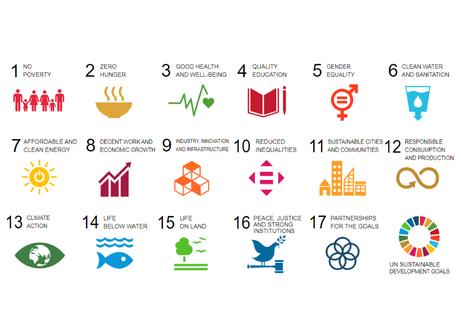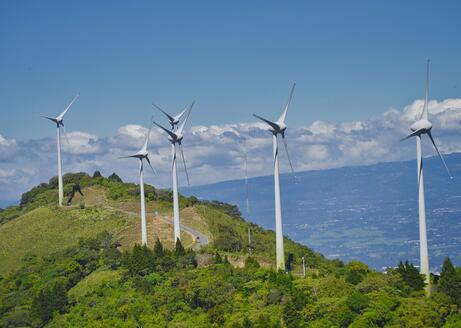OpenFunds ESG policy
OpenFunds facilitates the allocation of capital to sustainable and impact investment strategies, providing asset owners with attractive long-term return potential whilst driving positive change for the world.
We provide a platform to access boutique investment managers that have convinging ESG approaches embedded in their investment strategies.
It is our belief that explicit recognition of ESG factors will deliver better long-term outcomes for investors, primarily by reducing risks.
What ESG means to us
Environmental (E)
This aspect considers a company's impact on the environment. It includes factors such as the company's carbon footprint, energy efficiency, waste management, water usage, and other environmental practices. Companies with strong environmental performance are often those that prioritize sustainability, renewable energy, and resource conservation.
Social (S)
The social component focuses on how a company manages its relationships with employees, suppliers, customers, and the communities in which it operates. Social criteria may include labor practices, human rights, diversity and inclusion, community engagement, and product safety. Companies with strong social performance tend to prioritize fair labor practices, diversity, and positive contributions to society.
Governance (G)
Governance refers to the structure and practices that guide a company's decision-making processes. It includes factors such as board composition, executive compensation, shareholder rights, and adherence to ethical business practices. Companies with strong governance practices often demonstrate transparency, accountability, and a commitment to ethical conduct.

UN sustainable development goals
All our ESG managers have integrated some of the UN Sustainable development goals in their investment strategies.
The United Nations Sustainable Development Goals (SDGs) are a set of 17 interconnected global objectives designed to address pressing social, economic, and environmental challenges facing the world. These goals were adopted by all United Nations Member States in 2015 as part of the 2030 Agenda for Sustainable Development. The SDGs aim to mobilize efforts to end poverty, protect the planet, and ensure prosperity for all by 2030.
SFDR - Article 6, 8, and 9 funds
The Sustainable Finance Disclosures Regulation (SFDR) is an EU regulation designed to promote sustainable investments and transparency in financial markets. It mandates that financial market participants disclose how they integrate environmental, social, and governance (ESG) factors into their investment decisions. Key components include disclosure requirements, reporting on adverse sustainability impacts, and ensuring accurate information in marketing communications for sustainable products. The regulation aims to drive investments towards sustainability and enable informed decision-making by investors.
Article 6 Funds:
These are funds that don't consider sustainability factors in their investment decisions. They can include companies from any industry, even those traditionally seen as unsustainable, like tobacco or fossil fuels. However, Article 6 funds still need to disclose how they consider sustainability risks.
Article 8 Funds (Light Green):
These funds promote environmental or social characteristics alongside traditional financial returns. They might invest in companies with strong environmental practices or good labor standards. There's no strict requirement for what percentage of the fund needs to be invested sustainably, but they need to clearly explain their ESG (Environmental, Social, and Governance) strategy.
Article 9 Funds (Dark Green):
These funds have sustainable investment as their main objective. They aim to generate positive environmental or social impact alongside financial returns. Article 9 funds typically invest in companies that are demonstrably making a positive contribution to sustainability goals.
The classification helps investors understand a fund's approach to sustainability and choose investments that align with their values. It also helps prevent greenwashing, where funds make misleading claims about their sustainability focus.

Our ESG Funds
Osmosis Sustainability Principles:
- Osmosis defines its sustainable investing through Resource Efficiency, evaluating carbon emissions, water usage, and waste generation.
- Specializing in the environmental dimension (E), Osmosis leverages in-house expertise and proprietary data, integrating social and governance safeguards.
- Objectives encompass delivering superior risk-adjusted returns and substantial reductions in portfolio environmental footprints.
- Employing a best-in-class approach, Osmosis selects companies across sectors adept at efficiently using limited resources for economic value creation.
- Osmosis actively engages with companies on environmental performance and disclosure.
- The proprietary environmental database guides Osmosis' distinctive investment signal.
- Osmosis maintains a competitive edge through ongoing investments in the environmental expertise of its human capital.
- The Resource Efficiency metric emphasizes action, favoring companies at the forefront of resource management for economic value creation.
All Osmosis funds are Article 8 fund in terms of the classifications created by the European Union's Sustainable Finance Disclosure Regulation (SFDR), i.e.funds promoting environmental or social characteristics alongside traditional financial returns.
Click on the ESG Tab on the Osmosis Core fund page to find out more
Click on the ESG Tab on the Osmosis Core ex Fossil Fuel fund page to find out more
Click on the ESG Tab on the Osmosis European fund page to find out more
Tundra believes a sustainable company embodies responsible ownership, honest leadership, and strong management. Their goal is to invest in businesses making a long-term positive impact on society, producing environmentally and socially sustainable products or services relevant to future generations. Tundra's vision is to achieve financial returns and planetary relief through sustainable investments, emphasizing adherence to planetary boundaries. They integrate the 17 Sustainable Development Goals of Agenda 2030 as guiding tools, advocating a global holistic approach.
The Tundra Sustainable Frontier Fund targets emerging markets, focusing on low-income and lower-middle income countries. In these regions, where a significant portion of the population lacks fundamental rights, Tundra sees an opportunity for local companies to enhance societal well-being by addressing issues like healthcare, food supply, working conditions, and education.
Tundra is an Article 8 fund in terms of the classifications created by the European Union's Sustainable Finance Disclosure Regulation (SFDR), i.e. a fund promoting environmental or social characteristics alongside traditional financial returns.
Click on the ESG Tab on the Tundra fund page to find out more
Norron ESG strategy is based on the belief that sustainability is a shared responsibility for individuals and businesses. It is crucial for positive societal development. All businesses, including Norron, must integrate a sustainability strategy into their overall plans. Norron uses their sustainability policy as a framework for responsible investments. The company aims for financial success while contributing to social, environmental, and governance advancements. Norron's fund managers actively select sustainable investments, engage in dialogue, and advocate for improved practices in the companies they invest in.
Norron Select is an Art. 8 and Norron Sustainable Equity is an Article 9 fund in terms of the classifications created by the European Union's Sustainable Finance Disclosure Regulation (SFDR), i.e. a fund that has sustainable investment as its main objective. It aims to generate positive environmental or social impact alongside financial returns.
Click on the ESG Tab on the Norron Select fund page to find out more
Click on the ESG Tab on the Norron Sustainable fund page to find out more
Shipping and sustainability
Shipping is by far the most efficient transportation method with regards of eco-efficiency. And also growing, i.e. the goods loaded worldwide are on a steady growth path and, according to Clarksons Research, increased by over 35 % since 2008.
Briese Schiffahrt group is transporting a significant stake of the world’s overall renewable energy production, e.g. the majority of all windmills produced globally. Demand of energy infrastructure will further increase making transportation capacity of multipurpose project carriers a scarce commodity.
Wind is providing the largest contribution to renewable energy growth. According to the Global Wind Energy Council (GWEC): “2020 was the best year in history for the global wind industry but this growth is not sufficient to ensure the world achieves net zero by 2050. The world needs to be installing wind power three times faster over the next decade in order to stay on a net zero pathway and avoid the worst impacts of climate change.”.
Click on the ESG Tab on the Briese fund page to find out more
Threestones adopts a "Best in Progress" investment strategy in the global real estate market, aiming to improve properties' technical features, increase care beds availability, and ensure compliance with safety regulations. They prioritize responsible allocation of capital to achieve environmental and social goals while delivering sustainable financial returns. Threestones is affiliated with sustainability institutions like UN Principles for Responsible Investing and follows SFDR regulations. They integrate ESG (Environmental, Social, and Governance) factors into their investment strategy through a Sustainability Committee. Threestones identifies and monitors sustainability risks, applies ESG criteria in investment decision-making, and tracks ESG performance indicators. Their remuneration policy incentivizes sound risk management and considers ESG factors in employee assessments. Threestones is committed to international standards and reports annually through initiatives like GRESB.
Eurocare IV is an Article 8 fund in terms of the classifications created by the European Union's Sustainable Finance Disclosure Regulation (SFDR), i.e. a fund promoting environmental or social characteristics alongside traditional financial returns.
Click on the ESG Tab on the TSC Eurocare fund page to find out more
Bombyx: capital for textile & fashion innovators
The Fashion & Textile industry is facing a turning point towards a sustainability era.
The world has reached a crossroad, where industrial leaders, brands and consumers are sincerely looking at developing and implementing solutions and products that can change their businesses and the way they design products to be fit for the circular economy.
This creates the next generations of great founders and companies focusing on new materials, carbon awareness, water usage and waste reduction & recycling to maintain our planet for future generations. To successfully address these fundamental changes, these innovators need more growth capital. Bombyx is partnering with and investing along winning next generation entrepreneurs.
Bombyx II is an Article 8 fund in terms of the classifications created by the European Union's Sustainable Finance Disclosure Regulation (SFDR), i.e. a fund promoting environmental or social characteristics alongside traditional financial returns.
Click on the ESG Tab on the Bombyx Growth Fund II fund page to find out more
The TIR Europe Sustainable Forestry & Natural Capital Fund (SFNC) is designed as an ESG and sustainable investment vehicle that prioritizes both financial returns and environmental stewardship. Here’s how the Fund achieves its ESG and sustainability objectives:
- Selling Sustainable Timber Products: Sustainably growing, harvesting and selling high-quality, renewable timber resources for the production of end-use building, paper and packaging products.
- Carbon Sequestration: The Fund's forests are optimized for carbon storage, contributing to the fight against climate change. Carbon offsets generated from these forests are marketed in global compliance and voluntary carbon markets, providing investors with tangible environmental returns and opportunities to offset their carbon footprints.
- Protecting and Selling Sensitive Lands: Acquiring, securing and eventually selling sensitive lands to private conservation groups and public agencies that are interested in protecting their water, wildlife, scenic, recreational, historical and cultural attributes through the purchase of restrictive-use easements and fee-simple ownership rights.
- Developing Renewable Energy Resources Developing land-based renewable energy resources, especially solar energy infrastructure.
- Investing in solid wood products manufacturing facilities .The refurbishment or construction of sawmills, oriented strand board mills, plywood mills, etc.) in rural areas that are in need of economic development to spur job growth and enhance general prosperity.
- Compliance with International Standards: The SFNC is classified as an Article 9 fund under the European Union’s Sustainable Finance Disclosure Regulation (SFDR). This designation reflects the Fund’s commitment to sustainable investment and carbon emission reduction. The Fund’s operations adhere to the United Nations-supported Principles for Responsible Investment (PRI) and the Sustainable Forestry Initiative (SFI) standards.
ICG's approach to ESG and sustainability integrates responsible practices into their investment processes.
Key elements include:
- ESG Integration: Evaluating investments for environmental, social, and governance factors alongside financial performance.
- Sustainability Commitment: Investing in areas like renewable energy and technologies that reduce carbon emissions.
- Active Ownership: Engaging with portfolio companies to enhance their ESG practices.
- Transparency: Regular reporting on ESG activities and performance.
- ESG Culture: Training employees and embedding ESG values in the firm's mission.
- Industry Collaboration: Working with groups to promote and stay updated on ESG standards.
This approach aims to manage risks, create long-term value, enhance reputation, and ensure regulatory compliance, contributing to sustainable development.
ICG Industrial Metals and ICG Precious Metals adhere to Article 8 of the SFDR, while ICG Energy adheres to Article 6 of the SFDR.
Click on the ESG Tab on the ICG Industrial Metals Champions fund page to find out more
Click on the ESG Tab on the ICG Precious Metals Champions fund page to find out more
Click on the ESG Tab on the ICG Energy Champions fund page to find out more
GAMA's approach to ESG on three pillars:
- Exclusion: GAMA avoids investing in companies that do not meet fundamental responsibilities or are involved in controversial activities like nonconventional weapons, tobacco, unconventional fossil fuels, adult entertainment, and gambling.
- Integration: GAMA systematically incorporates ESG factors into their investment analysis, focusing on environmental issues (like carbon emissions and water use), social issues (such as human rights and labor practices), and governance factors (including corporate governance and political stability).
- Engagement: GAMA actively engages with companies to promote better environmental and social practices and encourages transparent disclosure of ESG-related information. They collaborate with other investors through memberships in organizations like the Institutional Investor Group on Climate Change and the UN PRI.
Additionally, GAMA benefits from an independent ESG Advisory Board, produces monthly ESG reports, and ensures all investment staff obtain ESG certification. They also embed ESG principles into corporate policies and strive to minimize their carbon footprint.
GAMA adheres to SFDR Article 8.
Click on the ESG Tab on the GAMA Global Short-Dated Opportunities fund page to find out more
Click on the ESG Tab on the GAMA Global Bond Opportunities fund page to find out more
ICP Asset Management integrates sustainability and ESG principles into its investment strategies to promote responsible asset management. Here’s a summary of their approach:
Sustainability Policy and Approach
- ESG Integration: ESG factors are embedded in investment analysis and decisions, assessing environmental, social, and governance impacts.
- Active Ownership: ICP engages with companies to improve their ESG practices through dialogue and activism.
- Exclusion Criteria: Investments are avoided in sectors or companies that don’t meet ICP’s ESG standards.
Entity-Level ESG Disclosures
- ESG Integration: ESG considerations are applied at all levels of investment management.
- Reporting and Accountability: Regular reports detail ESG performance and investment impacts.
- Governance Structures: Dedicated teams oversee ESG strategy and integration.
Product-Level ESG Disclosures
- Investment Selection Process: ESG criteria are used to select investments for each product.
- Performance Monitoring: The ESG performance of investments is tracked and reported.
- Disclosure and Transparency: Investors receive detailed information on how products meet ESG policies and performance metrics.
In essence, ICP Asset Management emphasizes responsible investing through active engagement, thorough ESG integration, and transparent reporting to balance financial returns with environmental and social impact.
Click on the ESG Tab on the ICP Global Transition Fund page to find out more




